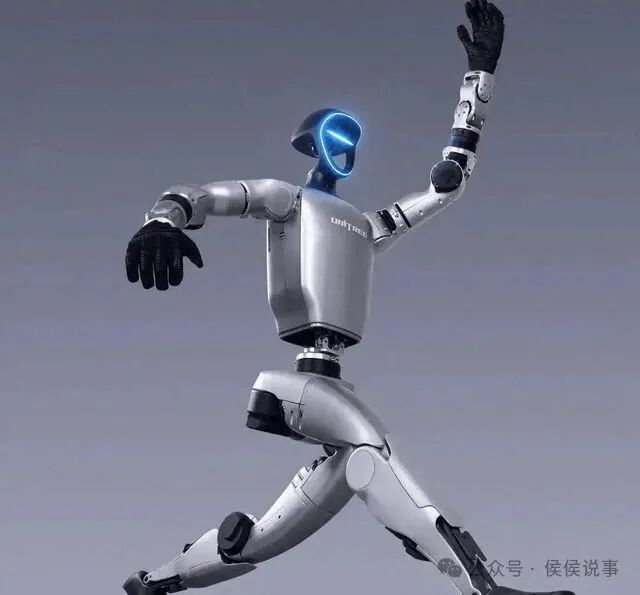
Is this yet another illusion of a “technological boom”? Just as everyone is still reeling from the fluctuations in the A-shares and Hong Kong stocks, exoskeleton robots suddenly made headlines on CCTV, instantly igniting the market’s sentiment. Social media buzzed with discussions: “Are robotics stocks about to take off?” and “Is a new technological boom upon us?” But upon reflection, from humanoid robots to the current exoskeleton equipment, is this wave of technological hype truly worth pursuing? Or are the rules of the game already written, just waiting for the unsuspecting to line up for entry?
Looking back, the recent market trends resemble a roller coaster. Just when you think it’s about to take off, it’s actually preparing for a rapid descent. Since May, it was believed that positive news would provide a boost, yet quantitative funds still sold off, leading to a high open and low close in A-shares, while Hong Kong stocks even flipped from a significant rise to a decline. This pattern is not new. However, what’s more frightening than the fluctuations themselves is the “utilization value” that follows each piece of good news—some speculate on expectations, some buy at high points, and some reap the rewards.
At this moment, exoskeleton robots made a strong entrance. Once reported by CCTV, public opinion exploded. But have you considered whether it symbolizes technological advancement or is merely the next “scythe”?
The so-called exoskeleton robots sound like equipment from a science fiction movie—wearing one allows you to easily lift heavy objects, climb stairs effortlessly, and even restore mobility for the disabled. This technology has already been widely applied in Europe and the United States, spanning medical rehabilitation, military training, and industrial production, and is no longer in the conceptual stage. But what is the current state of the Chinese market? Is it driven by genuine demand, or is it a conceptual frenzy fueled by capital? We must clarify this.
An undeniable fact is that the robotics sector has been continuously hyped in cycles. From the explosive popularity of the “humanoid robot” concept in 2023 to the current focus on “exoskeletons,” many technology-themed funds have seen impressive gains, such as the “China Europe CSI Robotics Index” and “Bosera CSI Robotics Index,” which have become potential stocks in the eyes of many. But with this comes the question—do you truly understand the asset composition behind these funds? Are these companies making substantial progress in the field of exoskeleton robots, or are they merely riding the hype?
I have a friend who heavily invested in robotics concepts at the beginning of the year, eagerly buying into a certain technology ETF, only to see its net value shrink by 15% in just three months. It’s not that this direction lacks prospects, but the rhythm, timing, and interpretation of news determine your profits and losses. This is why people often joke in the market: “Buying funds is less effective than following the news; chasing trends is more important than studying financial reports.” It sounds funny, but it’s actually quite sad.
Another easily overlooked issue is that while the robotics concept appears glamorous, there are actually very few companies with core technologies. Currently, only a handful of companies in China are deeply involved in exoskeleton robotics, many of which are still in prototype testing or early research stages, far from large-scale commercialization. What you see as “concept stocks” in funds and stocks may just be businesses that have a slight connection to the field, pushed to the forefront of the hype.

Therefore, the question now is not whether “exoskeleton robots are the future,” but rather—how far is that future from us? On this path, is technology leading the way, or are emotions and capital pulling us along?
Speaking of which, I can’t help but recall a real incident. This spring, while undergoing rehabilitation treatment at a hospital, I witnessed a young man paralyzed from a car accident struggle to take a few steps while wearing a domestic exoskeleton device. That scene brought a lump to my throat. This is the hope brought by technology. But looking back at the stock market, technology, which should warm the heart, has turned into a “harvesting tool” in the hands of capital. What are we truly pursuing—profits or trust in the future?
Investment has never been a game of luck, nor a frenzied rush. The robotics industry is undoubtedly an important part of future technology, but it requires time, technological breakthroughs, and policy support, rather than today’s hype and tomorrow’s chaos. Those who truly make money are not the followers, but those who can understand the industry’s context and identify market bubbles.
I do not deny that this industry has prospects, nor do I advise you to avoid it now. I just hope that before you impulsively enter the market, you ask yourself: Do you understand the truth of this industry? Are you buying a company or a story? In the tide of market emotions, can you maintain a sense of clarity and judgment?
People often say, “When the wind blows, even pigs can fly.” But when the wind stops, do you know how fast they fall?
So, what do you think of the current wave of exoskeleton robots? Is it a new starting point for technological revolution, or yet another illusion under capital speculation?